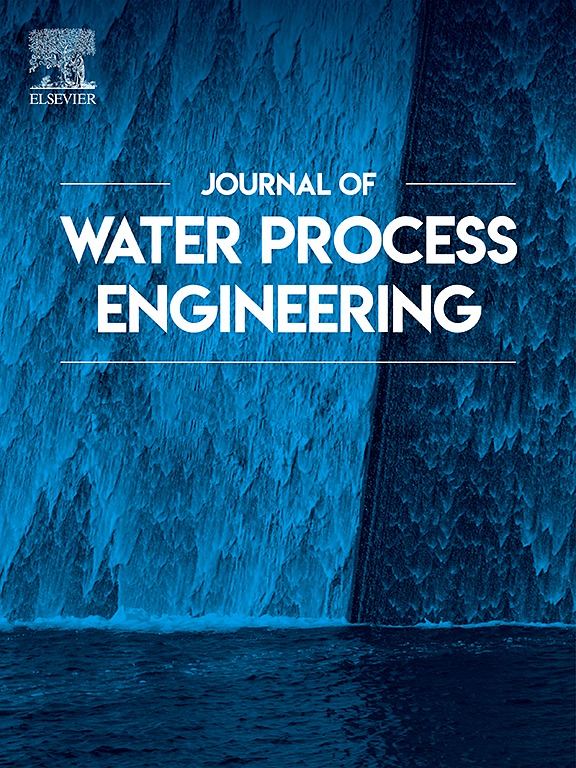Evaluation of resource-based rural sewage treatment system driven by clean energy in Northwest China
IF 6.3
2区 工程技术
Q1 ENGINEERING, CHEMICAL
引用次数: 0
Abstract
Rural areas in Northwest China are sparsely populated. Traditional centralized domestic sewage treatment facilities have large-scale investments, high operating costs, and complicated operation and maintenance management, challenging their application in these areas. Given the abundant clean energy and limited agricultural irrigation water in Northwest China, this study constructs a solar-wind driven rural domestic sewage treatment system with a treatment scale of 1.5 m3/d and HRT of 14 h. Effluent quality was suitable for farmland irrigation. The efficiency of complementary solar-wind power generation and the system operating performance and potential application value were assessed. The effluent CODCr meets the Class A vegetable irrigation standards (average removal rate is 70 %) in the “Standard for Irrigation Water Quality” (GB5084–2021). The average retention efficiencies of NH4+-N and SRP are 100.23 % and 104.3 %, respectively. Using the emission factor method, indirect and direct carbon emissions and the carbon reduction potential were evaluated. The carbon reduction rate during the life cycle is 53.15 %. Finally, a life-cycle cost evaluation model quantified a 25-year life cycle cost-effectiveness. The application potential was confirmed based on investment costs. This study demonstrates this novel treatment system feasibility in terms of operational performance, carbon emissions, and cost-effectiveness and provides a scientific basis for low-carbon and sustainable resource recycling to rural sewage treatment systems.

求助全文
约1分钟内获得全文
求助全文
来源期刊

Journal of water process engineering
Biochemistry, Genetics and Molecular Biology-Biotechnology
CiteScore
10.70
自引率
8.60%
发文量
846
审稿时长
24 days
期刊介绍:
The Journal of Water Process Engineering aims to publish refereed, high-quality research papers with significant novelty and impact in all areas of the engineering of water and wastewater processing . Papers on advanced and novel treatment processes and technologies are particularly welcome. The Journal considers papers in areas such as nanotechnology and biotechnology applications in water, novel oxidation and separation processes, membrane processes (except those for desalination) , catalytic processes for the removal of water contaminants, sustainable processes, water reuse and recycling, water use and wastewater minimization, integrated/hybrid technology, process modeling of water treatment and novel treatment processes. Submissions on the subject of adsorbents, including standard measurements of adsorption kinetics and equilibrium will only be considered if there is a genuine case for novelty and contribution, for example highly novel, sustainable adsorbents and their use: papers on activated carbon-type materials derived from natural matter, or surfactant-modified clays and related minerals, would not fulfil this criterion. The Journal particularly welcomes contributions involving environmentally, economically and socially sustainable technology for water treatment, including those which are energy-efficient, with minimal or no chemical consumption, and capable of water recycling and reuse that minimizes the direct disposal of wastewater to the aquatic environment. Papers that describe novel ideas for solving issues related to water quality and availability are also welcome, as are those that show the transfer of techniques from other disciplines. The Journal will consider papers dealing with processes for various water matrices including drinking water (except desalination), domestic, urban and industrial wastewaters, in addition to their residues. It is expected that the journal will be of particular relevance to chemical and process engineers working in the field. The Journal welcomes Full Text papers, Short Communications, State-of-the-Art Reviews and Letters to Editors and Case Studies
 求助内容:
求助内容: 应助结果提醒方式:
应助结果提醒方式:


